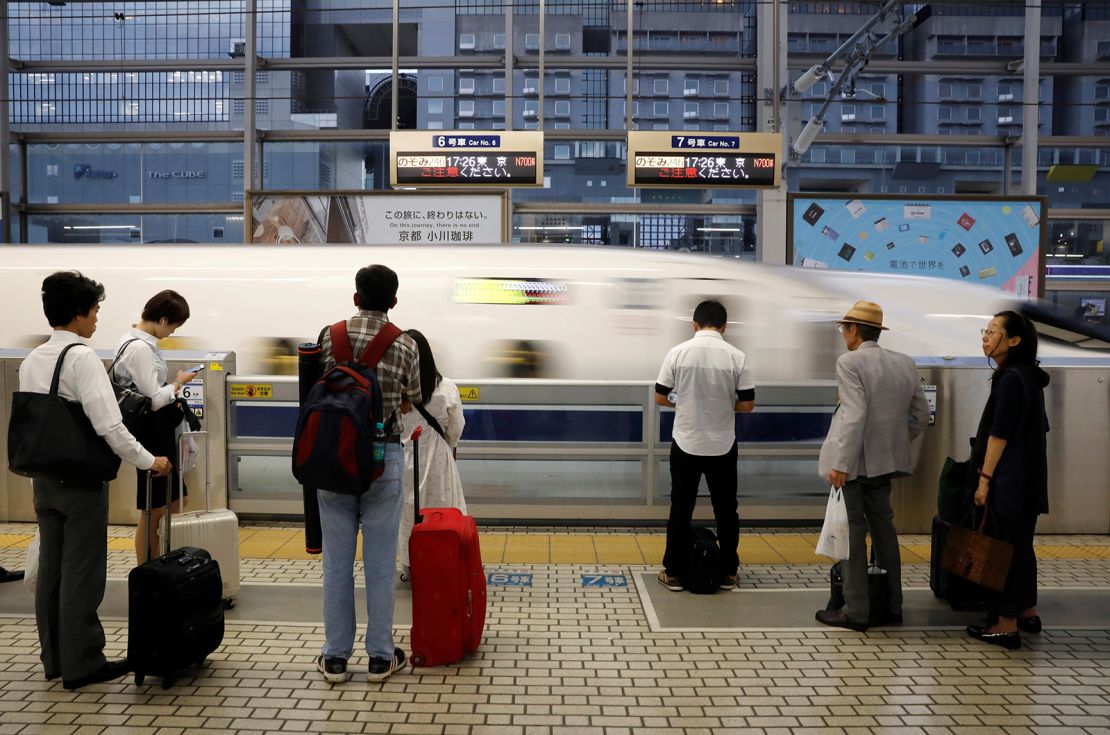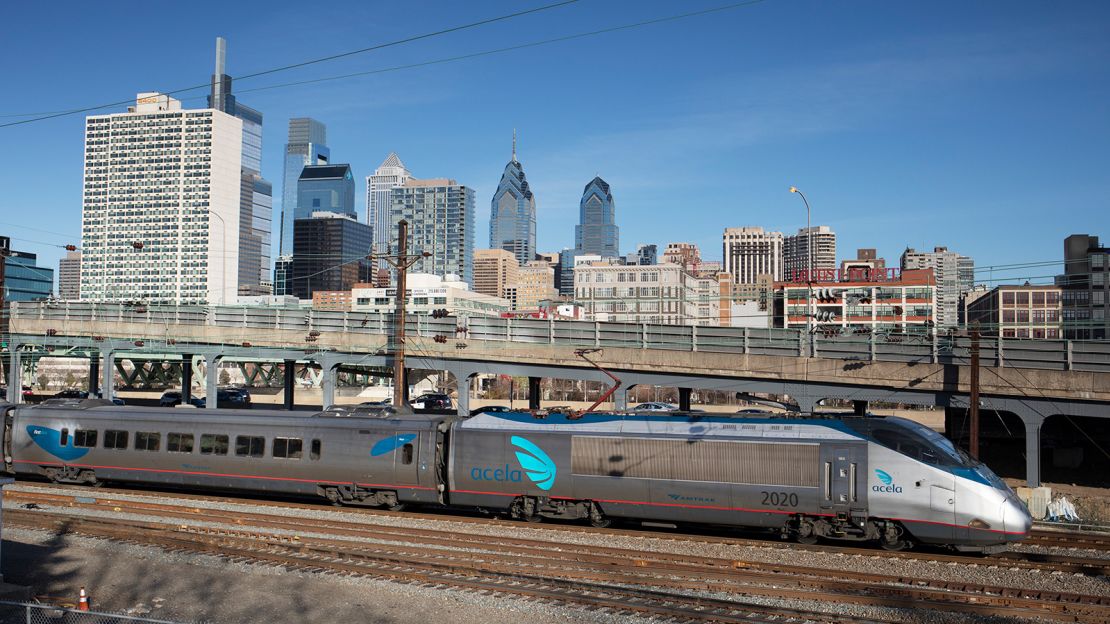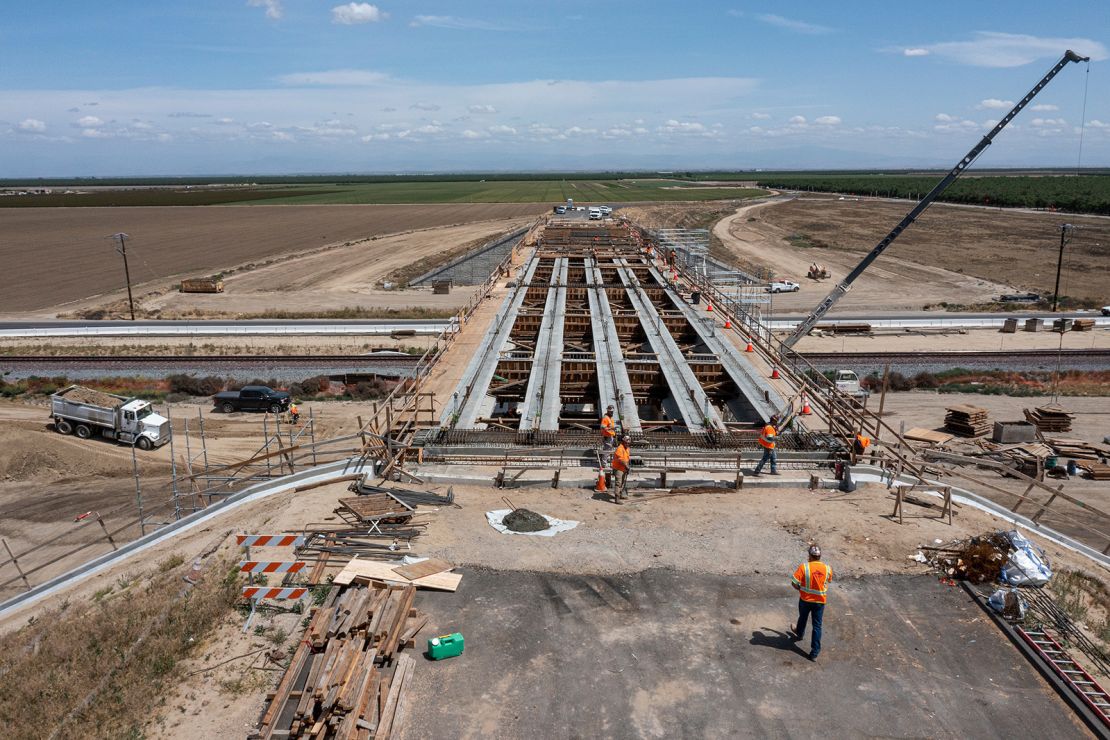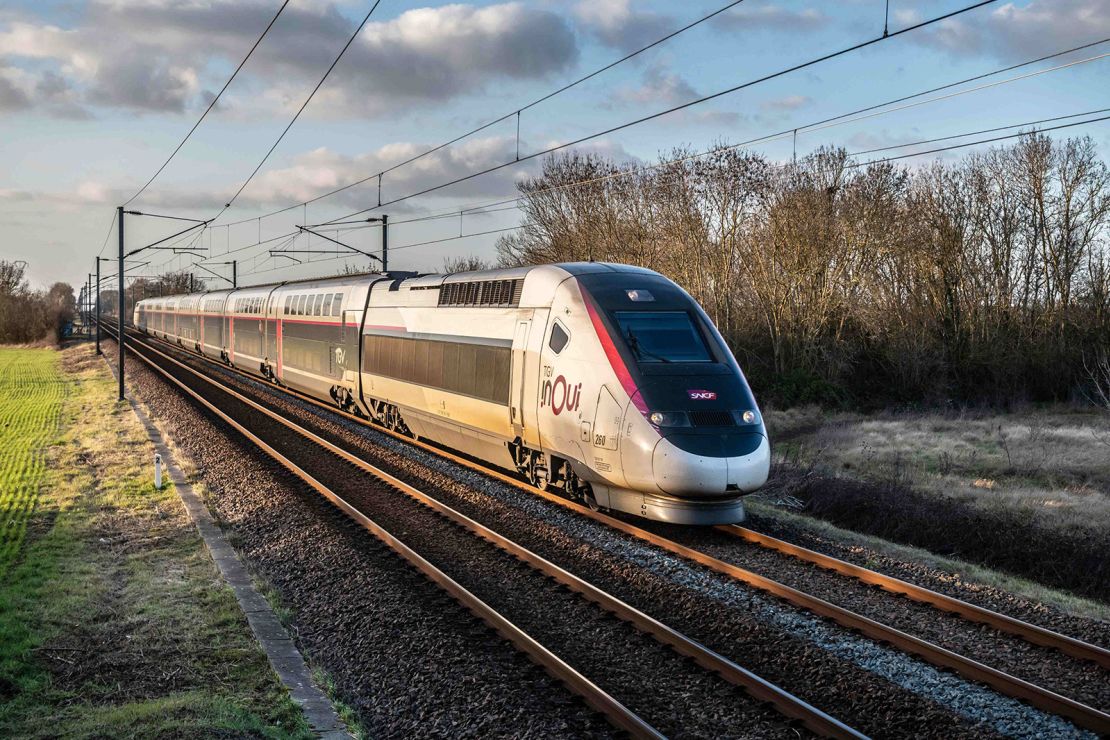The US still waits for its high-speed rail revolution

CNN
—
Excessive pace trains have proved their price internationally over the previous 50 years.
It’s not simply in lowering journey occasions, however extra importantly, it’s in driving financial development, creating jobs and bringing communities nearer collectively. China, Japan and Europe cleared the path.
So why doesn’t the US have a high-speed rail community like these?
For the richest and most economically profitable nation on the planet, with an more and more urbanized inhabitants of greater than 300 million, it’s a place that’s changing into tougher to justify.
Though Japan began the development with its Shinkansen “Bullet Trains” in 1964, it was the appearance of France’s TGV within the early Nineteen Eighties that actually kick-started a world high-speed practice revolution that continues to assemble tempo.

Nevertheless it’s a revolution that has up to now bypassed the US. Individuals are nonetheless nearly totally reliant on congested highways or the headache-inducing stress of an airport and airline community susceptible to meltdowns.
China has constructed round 26,000 miles (42,000 kilometers) of devoted high-speed railways since 2008 and plans to high 43,000 miles (70,000 kilometers) by 2035.
In the meantime, the US has simply 375 route-miles of monitor cleared for operation at more than 100 mph.
“Many Individuals haven’t any idea of high-speed rail and fail to notice its worth. They’re hopelessly caught with a freeway and airline mindset,” says William C. Vantuono, editor-in-chief of Railway Age, North America’s oldest railroad business publication.
Automobiles and airliners have dominated long-distance journey in the US for the reason that Fifties, quickly usurping a community of luxurious passenger trains with evocative names reminiscent of “The Empire Builder,” “Tremendous Chief” and “Silver Comet.”
Abandoned by Hollywood film stars and enterprise vacationers, well-known railroads such because the New York Central have been largely bankrupt by the early Nineteen Seventies, handing over their loss-making trains to Amtrak, the nationwide passenger practice operator based in 1971.
Within the a long time since that traumatic retrenchment, US freight railroads have largely flourished. Passenger rail appears to have been a really low precedence for US lawmakers.
Highly effective airline, oil and auto business lobbies in Washington have spent hundreds of thousands sustaining that superiority, however their place is weakening within the face of environmental issues and worsening congestion.
US President Joe Biden’s $1.2 trillion infrastructure bill consists of an unprecedented $170 billion for enhancing railroads.
A few of this shall be invested in repairing Amtrak’s crumbling Northeast Hall (NEC) linking Boston, New York and Washington.
There are additionally large plans to carry passenger trains again to many extra cities throughout the nation – offering quick, sustainable journey to cities and areas that haven’t seen a passenger practice for many years.
Add to this the success of the privately funded Brightline operation in Florida, which has been given the inexperienced mild to construct a $10 billion high-speed rail hyperlink between Los Angeles and Las Vegas by 2027, plus schemes in California, Texas and the proposed Cascadia route linking Portland, Oregon, with Seattle and Vancouver, and the US eventually seems to be on the cusp of a passenger rail revolution.

“Each president since Ronald Reagan has talked in regards to the urgent want to enhance infrastructure throughout the USA, however they’ve at all times had different, larger priorities to take care of,” says Scott Sherin, chief business officer of practice builder Alstom’s US division.
“However now there’s an enormous impetus to get issues shifting – it’s a time of optimism. If we construct it, they may come. As an business, we’re maturing, and we’re able to take the following step. It’s time to give attention to passenger rail.”
Sherin factors out that different public companies reminiscent of highways and airports are “massively backed,” so there shouldn’t be a difficulty with doing the identical for rail.
“We have to do a greater job of articulating the advantages of high-speed rail – high-quality jobs, financial stimulus, higher connectivity than airways – and that can assist us to construct bipartisan assist,” he provides. “Excessive-speed rail just isn’t the answer for every thing, nevertheless it has its place.”
Solely Amtrak’s Northeast Hall has trains that may journey at speeds approaching these of the 300 kilometers per hour (186 mph) TGV and Shinkansen.
Even right here, Amtrak Acela trains at present max out at 150 mph – and solely in brief bursts. Most speeds elsewhere are nearer to 100 mph on congested tracks shared with commuter and freight trains.
This yr, Amtrak plans to introduce its new era Avelia Liberty trains to exchange the life-expired Acelas on the NEC.
Able to reaching 220 mph (though they’ll be restricted to 160 mph on the NEC), the trains will carry Alstom’s newest high-speed rail expertise to North America.
The locomotives at every finish – generally known as energy automobiles – are shut kin of the following era TGV-M trains, scheduled to debut in France in 2024.
Sitting between the facility automobiles are the passenger automobiles, which use Alstom’s Tiltronix expertise to run sooner via curves by tilting their our bodies, very like a MotoGP rider does. And it’s not simply vacationers who will profit.
“When Amtrak awarded the contract to Alstom in 2015 to 2016, the corporate had round 200 workers in Hornell,” says Shawn D. Hogan, former mayor of the town of Hornell in New York state.
“That determine is now nearer 900, with hiring persevering with at a quick tempo. I calculate that there was a complete public/non-public funding of greater than $269 million in our metropolis since 2016, together with a brand new lodge, a state-of-the-art hospital and housing developments.
“It’s a transformative financial improvement challenge that’s principally remarkable in rural America and if it may possibly occur right here, it may possibly occur all through the US.”
Alstom has spent nearly $600 million on constructing a US provide chain for its high-speed trains – greater than 80% of the practice is made in the US, with 170 suppliers throughout 27 states.
“Excessive-speed rail is already right here. Avelia Liberty was designed collectively with our European colleagues, so we now have what we want for ‘TGV-USA’,” provides Sherin.
“It’s all confirmed tech from current trains. We’re able to go when the infrastructure arrives.”
And people new traces might arrive ahead of you may assume.
In March, Brightline confirmed plans to start development on a 218-mile (351-kilometer) high-speed line between Rancho Cucamonga, close to Los Angeles, and Las Vegas, carving a path via the San Bernardino Mountains and throughout the desert, following the Interstate 15 hall.
The 200 mph line will slash occasions to little multiple hour – an enormous benefit over the four-hour common by automotive or 5 to seven hours by bus – when it opens in 2027.
Mike Reininger, CEO of Brightline Holdings, says: “As essentially the most shovel-ready high-speed rail challenge in the US, we’re one step nearer to leveling the enjoying subject in opposition to transit and infrastructure initiatives all over the world, and we’re proud to be utilizing America’s most expert employees to get there.”
Brightline West expects to inject round $10 billion price of advantages into the area’s economic system, creating about 35,000 development jobs, in addition to 1,000 everlasting jobs in upkeep, operations and customer support in Southern California and Nevada.
It is going to additionally mark the return of passenger trains to Las Vegas after a 30-year hiatus – Amtrak canceled its “Desert Wind” route in 1997.
Brightline hopes to draw round 12 million of the 50 million one-way trips taken yearly between Las Vegas and LA, 85% of that are taken by bus or automotive.

In the meantime, development is progressing on one other high-speed line via the San Joaquin Valley.
Set to open round 2030, California Excessive Pace Rail (CHSR) will run from Merced to Bakersfield (171 miles) at speeds of as much as 220 mph.
Coupled with proposed upgrades to commuter rail traces at both finish, this challenge might ultimately permit high-speed trains to run the 350 miles (560 kilometers) between Los Angeles to San Francisco metropolitan areas in simply two hours and 40 minutes.
CHSR has been on the desk way back to 1996, however its implementation has been controversial.
Disagreements over the route, administration points, delays in land acquisition and development, price over-runs and insufficient funding for finishing the whole system have plagued the challenge – regardless of the financial advantages it should ship in addition to lowering air pollution and congestion. Round 10,000 individuals are already employed on the challenge.
Costing $63 billion to $98 billion, relying on the ultimate extent of the scheme, CHSR is to attach six of the ten largest cities within the state and supply the identical capability as 4,200 miles of recent freeway lanes, 91 further airport gates and two new airport runways costing between $122 billion and $199 billion.
With California’s inhabitants anticipated to develop to greater than 45 million by 2050, high-speed rail provides the most effective worth answer to maintain the state from grinding to a smoggy halt.
Brightline West and CHSR supply templates for the long run growth of high-speed rail in North America.
By specializing in pairs of cities or areas which can be too shut for air journey and too far aside for automotive drivers, transportation planners can predict which corridors supply the best potential.
“It’s logical that the US hasn’t but developed a nationwide high-speed community,” says Sherin. “For many years, touring by automotive wasn’t a hardship, however as freeway congestion will get worse, we’ve reached a stage the place we must always begin wanting extra significantly on the alternate options.
“The magic numbers are facilities of inhabitants with round three million individuals which can be 200 to 500 miles aside, giving a visit time of lower than three hours – ideally two hours.
“The place these circumstances apply in Europe and Asia, high-speed rail reduces air’s share of the market from 100% to close zero. The mannequin would work simply as properly within the USA because it does globally.”

Sherin factors to the success of the unique era of Acela trains as proof of this.
“When the primary era Acela trains began operating between New York Metropolis and Washington in 2000, Amtrak attracted so many vacationers that the airways stopped operating their frequent ‘shuttles’ between the 2 cities,” he provides.
Nevertheless, business observer Vantuono is extra pessimistic.
“A US high-speed rail community is a pipe dream,” he says. “A scarcity of political assist and federal monetary assist mixed with the form of fierce landowner opposition that CHSR has confronted in California implies that the challenges for brand new high-speed initiatives are huge.”
In response to the Worldwide Vitality Company (IEA), city and high-speed rail maintain “main promise to unlock substantial advantages” in lowering world transport emissions.
Dr. Fatih Birol, the IEA’s government director, argues that rail transport is “usually uncared for” in public debates about future transport techniques – and that is very true in North America.
“Regardless of the appearance of automobiles and airplanes, rail of all sorts has continued to evolve and thrive,” provides Birol.
Globally, round three-quarters of rail passenger actions are made on electric-powered automobiles, placing the mode in a singular place to reap the benefits of the rise in renewable vitality over the approaching a long time.
Right here, too, the US lags far behind the remainder of the world, with electrification nearly remarkable away from the NEC.
Rail networks in South Korea, Japan, Europe, China and Russia are greater than 60% electrified, based on IEA figures, the best share of monitor electrification being South Korea at round 85%.
In North America, then again, lower than 5% of rail routes are electrified.
The big dimension of the US and its extensively dispersed inhabitants mitigates in opposition to the creation of a single, unified community of the kind being inbuilt China and proposed for Europe.
Air journey is more likely to stay the popular possibility for transcontinental journeys that may be greater than 3,000 miles (round 4,828 kilometers).
However there are a lot of shorter inter-city journey corridors the place high-speed rail, or a mix of recent infrastructure and upgraded railroad tracks or tilting trains, might ultimately present an unbeatable different to air journey and highways.
2023-04-19 02:39:00





